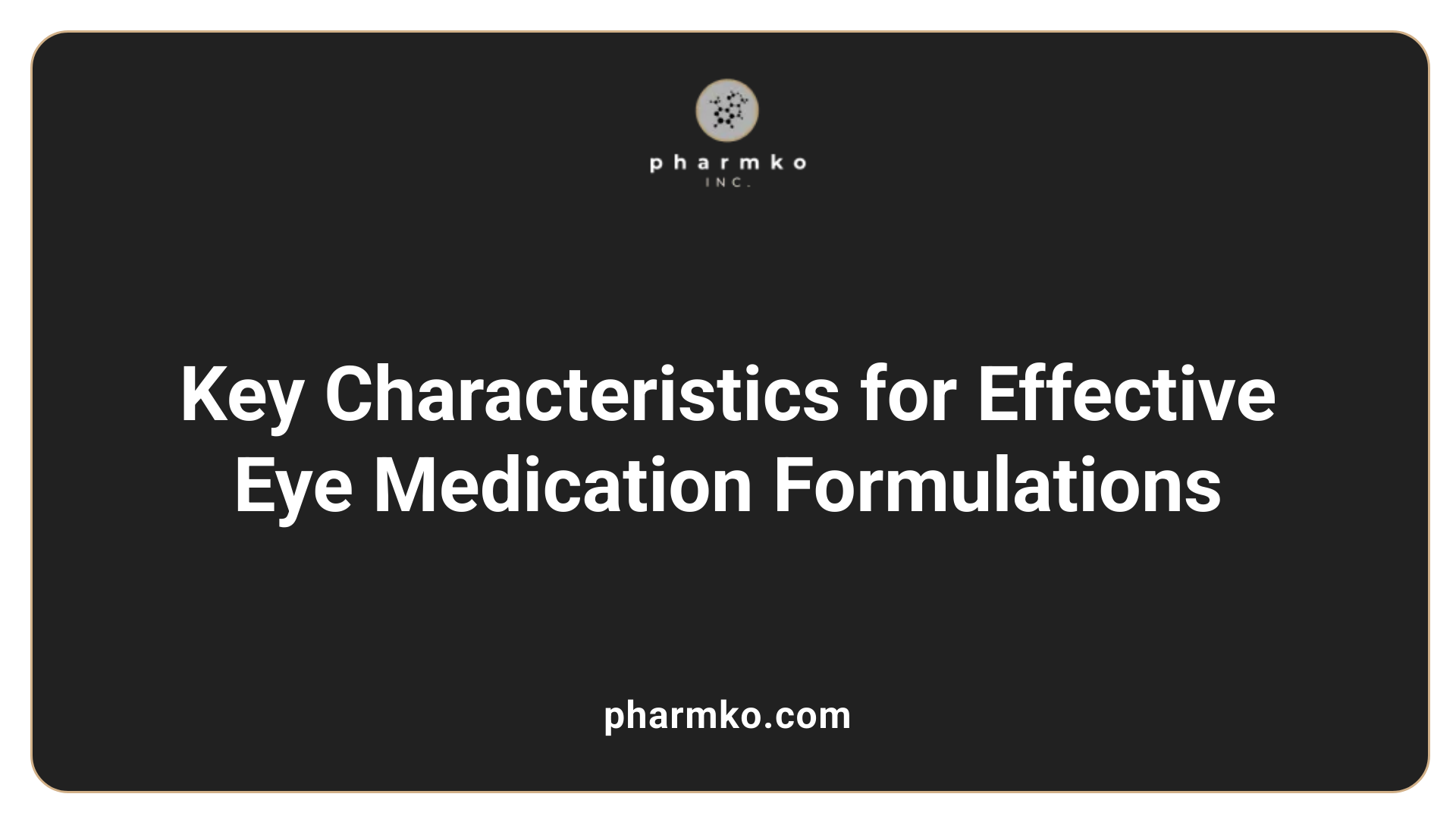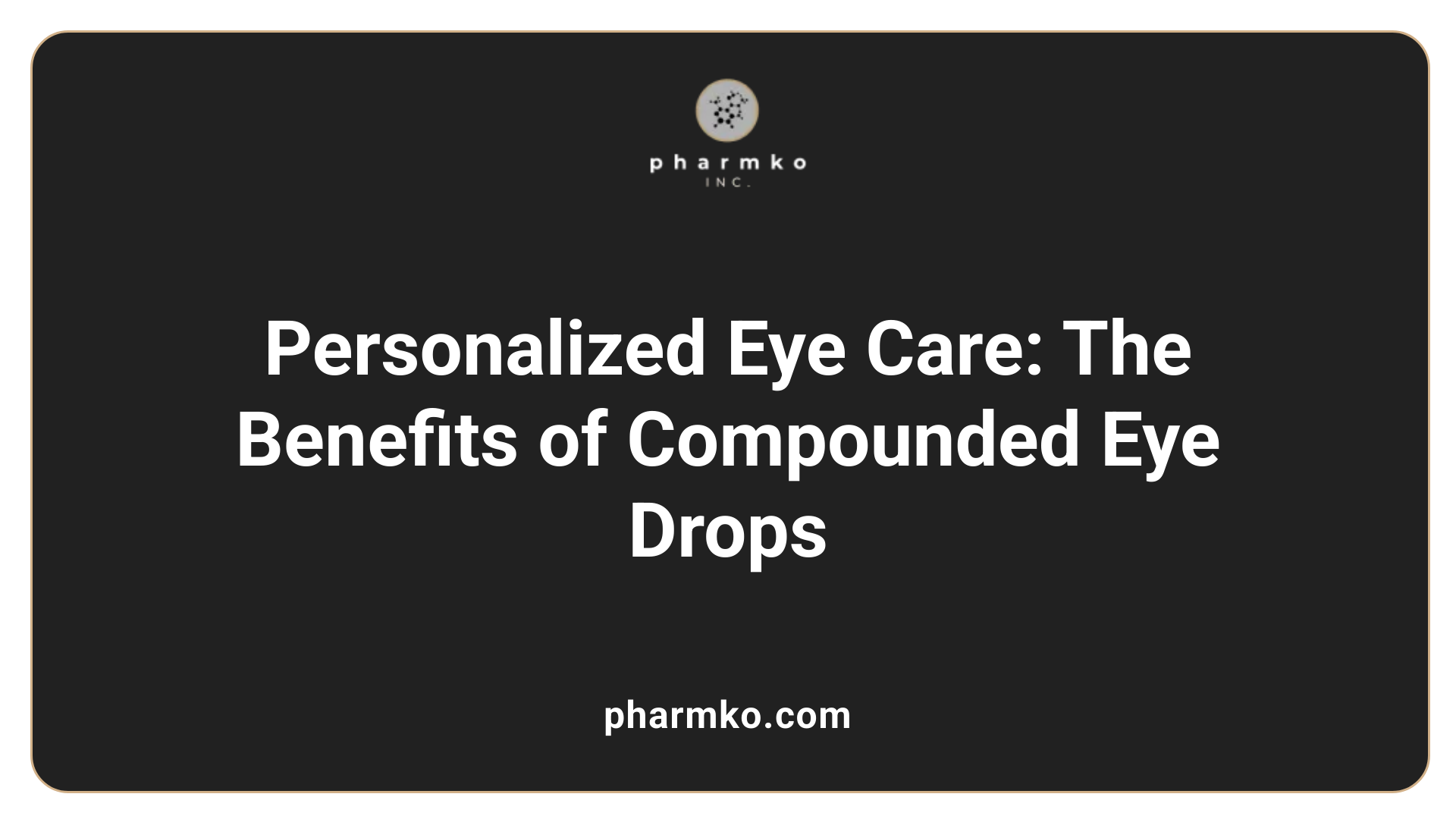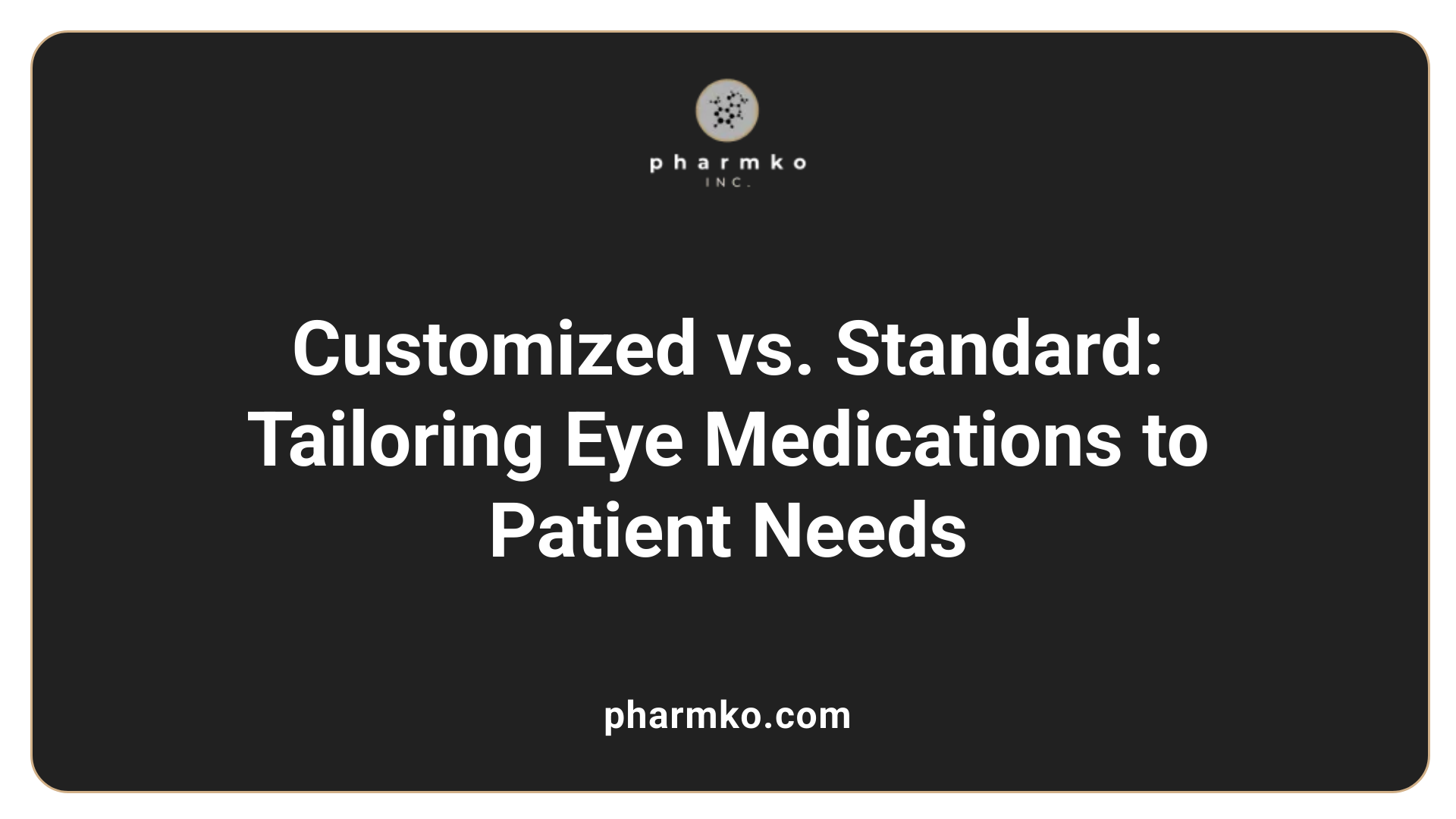How do custom ophthalmic compounds support eye care?
Understanding the Impact of Customized Ophthalmic Treatments
In the evolving field of ophthalmology, personalized approaches to eye care are increasingly vital. Custom ophthalmic compounds, meticulously designed to meet individual patient needs, are transforming treatment paradigms by filling therapeutic gaps, enhancing safety, and improving outcomes. This article explores how these specialized medications support comprehensive eye care, emphasizing their properties, applications, and significance in modern ophthalmic practice.
Essential Properties of Ophthalmic Preparations

What are the essential properties of ophthalmic preparations?
Ophthalmic medications must possess several critical properties to ensure safety, effectiveness, and patient comfort. These key characteristics include sterility, preservation, control of particle size, appropriate pH, stability, and options that prioritize patient comfort.
Sterility is paramount in ophthalmic drugs to prevent infections that could lead to serious eye complications or vision loss. This is achieved through sterile manufacturing environments and aseptic techniques, especially in high-standard compounding pharmacies that follow USP 797 and 800 guidelines.
Preservation methods protect the medication's integrity during use. While preservatives help prevent microbial growth in multi-dose bottles, there is a growing preference for preservative-free options, particularly for sensitive eyes or chronic conditions, to reduce irritation.
Particle size control is vital to avoid irritation and ensure proper absorption. Smaller particles can penetrate ocular tissues more evenly and comfortably, reducing the risk of discomfort.
The appropriate pH level of ophthalmic solutions supports drug stability and minimizes irritation. Adjusting pH to match natural tear pH (~7.4) enhances patient comfort and drug tolerance.
Stability factors such as proper formulation and storage conditions prolong the shelf life of eye medications. Stability ensures that active ingredients remain effective and safe from degradation.
Lastly, patient comfort considerations involve using formulations that do not cause burning, stinging, or blurred vision, and that are tailored to individual patient needs. For example, compounded preparations like autologous serum eye drops or preservative-free solutions can be particularly beneficial.
In summary, optimized ophthalmic preparations are sterile, preservative-free or properly preserved, particle-size controlled, pH-balanced, stable, and designed to maximize patient comfort, all crucial for effective eye care.
Benefits of Compounded Eye Drops in Eye Care

How do compounded eye drops benefit patients in eye care?
Compounded eye drops provide many advantages by offering treatments tailored to each patient's unique needs. For example, they can be made preservative-free, which is especially helpful for patients with sensitive eyes or those needing long-term therapy. Custom formulations can also include specific drug combinations, like antibiotics and anti-inflammatory agents, which simplify complex treatment regimens.
One of their greatest strengths is filling gaps when commercial medications are unavailable, such as during drug shortages or for medications that are discontinued. This ensures continuous care without the need to switch therapies or risk untreated conditions.
These customized solutions support better comfort and safety. For example, preservative-free options minimize irritation, while specialized gels and drops can enhance drug absorption.
In clinical settings, compounded medications can help reduce the number of different eye drops a patient uses by combining multiple drugs into a single formulation. This simplifies daily routines, improves adherence, and enhances treatment efficacy.
Cost also plays a role. Compounded eye medications can be more affordable compared to proprietary brand names, making ongoing eye care more accessible. Additionally, pharmacies can produce medications on demand, providing convenience for both patients and providers.
Overall, compounded eye drops support personalized care, improve safety, and help maintain eye health by ensuring that each patient receives the most appropriate, effective, and manageable treatment plan.
Differences Between Compounded and Standard Ophthalmic Medications

How do compounded ophthalmic medications differ from standard eye medications?
Compounded ophthalmic medications are specially formulated by licensed pharmacists or physicians to cater to individual patient needs, which often cannot be met by commercially available products. These custom-made drugs are designed to provide specific dosages, unique drug combinations, or alternative formulations, such as preservative-free solutions for sensitive eyes.
Unlike standard medications that are FDA-approved and mass-produced, compounded medicines are prepared following high manufacturing standards but may not have specific regulatory approval for each particular use. They are particularly useful during medication shortages or when a medication is discontinued, ensuring patients continue to receive essential treatments.
Compounding allows for flexibility in treatment, providing options like fortified antibiotics for resistant infections or combining multiple drugs into a single drop to improve adherence. It also plays a vital role in specialized therapies such as autologous serum eye drops or customized dry eye solutions.
Safety and quality are paramount; reputable compounding pharmacies adhere to strict sterile procedures and standards, such as USP 797 and 800, to ensure safety and efficacy. These pharmacies often operate in certified facilities, producing medications like intraocular injections and surgical solutions in controlled environments.
In summary, compounded ophthalmic medications offer personalization and targeted treatment options, filling the gaps left by standard drugs while maintaining rigorous safety standards, essential for complex and sensitive eye treatments.
Role of Custom Ophthalmic Compounds in Eye Care

What is the role of custom ophthalmic compounds in supporting eye health and treatment?
Custom ophthalmic compounds are essential tools in modern eye care, offering tailored solutions for a wide range of eye conditions. They are formulated according to specific doctor prescriptions to meet individual patient needs, especially in cases where commercial medications are unavailable, unstable, or not suitable.
These personalized treatments significantly improve drug bioavailability, ensuring that active ingredients reach the target tissues effectively. For example, compounded drops can be preservative-free, ideal for patients with sensitivities or those requiring long-term therapy, reducing irritation and adverse effects.
Compounded medications support complex and resistant cases, such as fortified antibiotics for stubborn infections or autologous serum drops that provide growth factors for severe dry eye conditions. They also simplify treatment regimens by combining multiple drugs into a single drop, improving patient compliance.
Safety and efficacy are prioritized through preparations made in sterile, high-quality environments, ensuring that each medication meets strict standards. This precision is especially critical during medication shortages, in perioperative care to manage postoperative regimens, and for chronic eye conditions like glaucoma and age-related macular degeneration.
Furthermore, custom compounds enable innovative therapies, including gene and stem cell treatments for inherited retinal diseases. They facilitate the development of unique formulations—gels, ointments, and injectable solutions—that support healing, reduce inflammation, and slow disease progression.
In summary, personalized ophthalmic compounds play a pivotal role in advancing eye health by filling therapeutic gaps, supporting complex treatments, and enhancing safety, efficacy, and patient adherence. Their ability to provide customized, high-quality solutions underpins improved outcomes across a broad spectrum of ocular conditions.
Design and Formulation of Custom Ophthalmic Medications
What factors are considered when designing and preparing custom ophthalmic medications?
Creating personalized eye medications involves a detailed process that ensures safety, effectiveness, and patient comfort. One of the primary considerations is aseptic processing, which preserves sterility and prevents contamination—a critical factor given the eye’s sensitive tissue.
Formulation factors such as pH, viscosity, and stability are carefully optimized. Maintaining a pH similar to natural tears (around 7.4) reduces irritation, while the viscosity is adjusted to ensure enough contact time with the eye without impairing vision. Stability considerations involve selecting ingredients that remain potent and safe over the intended shelf life.
Excipients, including penetration enhancers and polymers, are incorporated to improve drug bioavailability. For example, increasing viscosity with agents like hyaluronic acid can prolong contact time, aiding absorption and therapeutic effect. Polymer-based agents may also facilitate sustained drug release.
Regulatory standards are strictly followed. This includes ensuring products are free from particles, properly packaged to avoid contamination, and biocompatible for ocular tissues. High standards at accredited compounding pharmacies—such as those following USP 797 and 800 guidelines—dictate safe, high-quality preparations.
Overall, designing customized eye drops demands meticulous attention to formulation science, regulatory compliance, and individual patient needs to deliver safe, effective, and comfortable treatments.
The Future of Personalized Eye Care
As ophthalmic medicine continues to advance, the importance of custom compounds becomes increasingly evident. Their ability to address individual needs, overcome medication shortages, and support innovative treatment strategies underscores their vital role in modern eye care. Dedicated compounding practices, strengthened by strict safety standards and cutting-edge research, are poised to drive the next generation of personalized treatments, ultimately improving patient outcomes and preserving vision for many years to come.
References
- Compounded medications in ophthalmic patient care
- Compound Eye Drop Medications
- Individualized Drugs for Individual Needs - Review of Optometry
- Eye Surgery and Ophthalmology Sterile Compounded Medication
- Ophthalmology Information - WeCare Pharmacy
- Ophthalmology Compounding - Nora Apothecary
- [PDF] Cure Stat Rx Ophthalmic Brochure
- Ophthalmology Compounding Pharmacy · NYC













